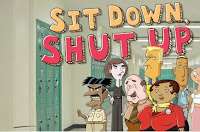I remember talking to a local identity who was known for their brilliance in public speaking, He said, ruefully, that he had no problem starting out; even less with the main body but when it came to shutting up and sitting down he just fell to pieces!
And that is a problem that many of us have, the inability to create a clean conclusion that rounds off what we have been talking about and finishes with a flourish. Conclusions are tricky, and getting a good one together is a product of experience.
Coming to a dead stop can solve the shutting up and sitting down problem, but it probably will not actually create a sense of completion for our audience. What we need to do is to elegantly round off what we have been speaking about and leave the audience with something to take away … something intellectual that is, not practical.
How we conclude depends on what we have decided is the required outcome of our speech or presentation. What do we really want the speech to achieve? Without knowing what this is we don’t have any guide marks to tell us when we have reached it.
When delivering a speech we take ten to fifteen minutes out of someone’s life to achieve a purpose. Even if that purpose is just to entertain, we still want to know that we have achieved that purpose. In business we may need to sell a product; convince someone to adopt our ideas; justify expenditure or inspire our audience to action.
Whatever it is, we need to have the outcome clear in our mind; and we need to be equally clear what it is that we want the audience to do with the information – change your eating habits; don’t lie in the sun; sign the petition; engage our company – the list is endless; but if you don’t know what it is, there is no way that your listeners will have a clue.
So the Conclusion solves two problems: first to remind the audience of your main points and secondly to tell them what you want them to do.
So start off your conclusion with a brief recap of the main points covered in your speech. Youneed only to highlight the point itself, it would be counterproductive to rehash the reasons and examples and if you did, you would be going round in circles as well as running out of time.
No, all you need to do his highlight them : –
“Let me remind you of the three reasons why this is important. First public transport is cost effective; secondly, private cars provide up to 59% of all city pollution and finally air pollution is a major cause of respiratory diseases in the elderly.”
Then you need to get some consensus for action. Challenge your audience to use the information. To buy the product; to hire your company or sign your petition for change.
“So here is the challenge – can you leave your car at home for two days this week and take public transport to work? If so you will be reducing the amount of air pollution, and the elderly will thank you.”
If you can then refer back to your opening remarks, maybe re-introduce a quotation you used in the Opening; or answer the rhetorical question you asked; then you will have successfully ended your presentation with a satisfying sense of completion.
Unlike my local identity, you will not have stopped speaking and sat down; no! you will have concluded and convinced.
Michele @ Trischel

